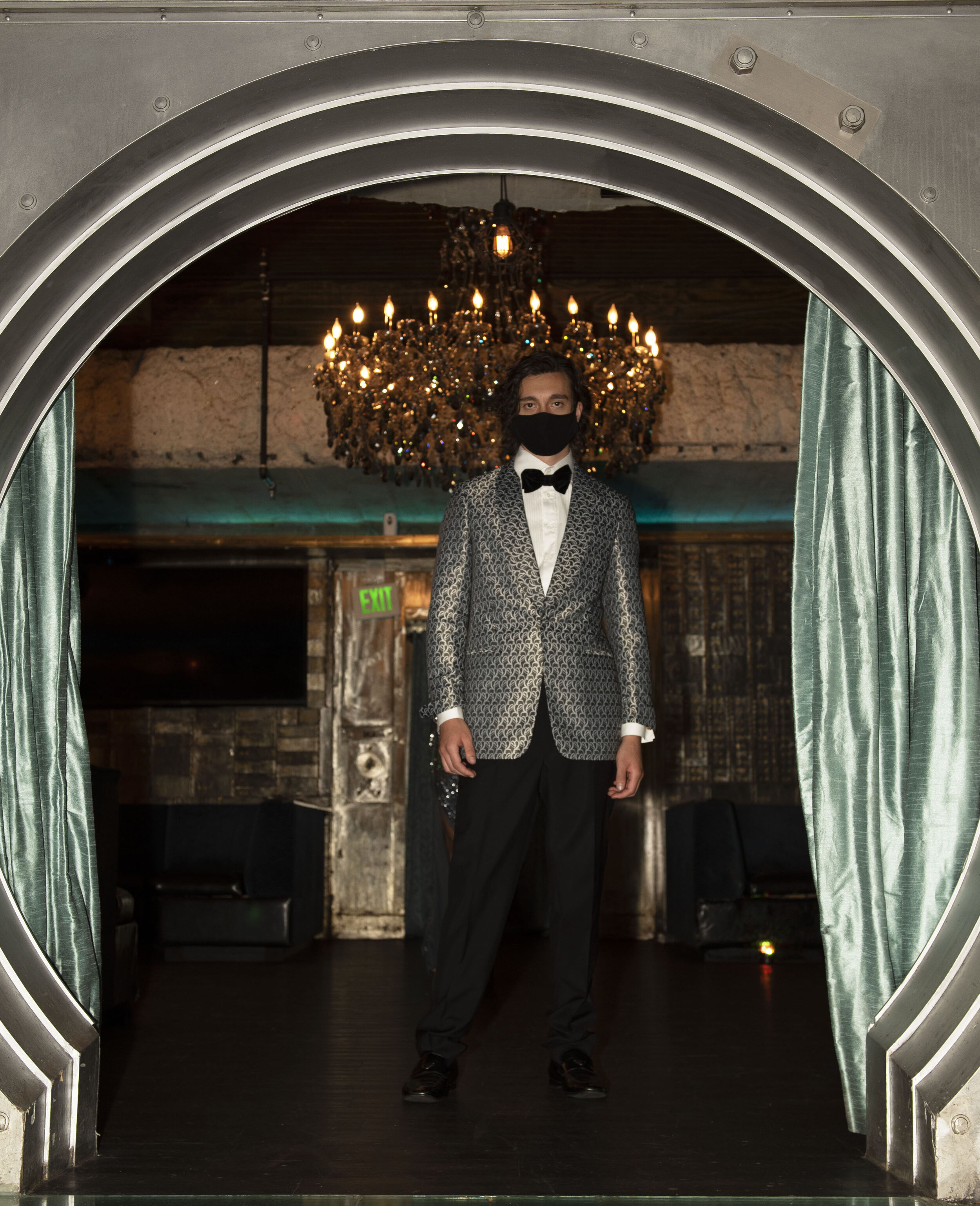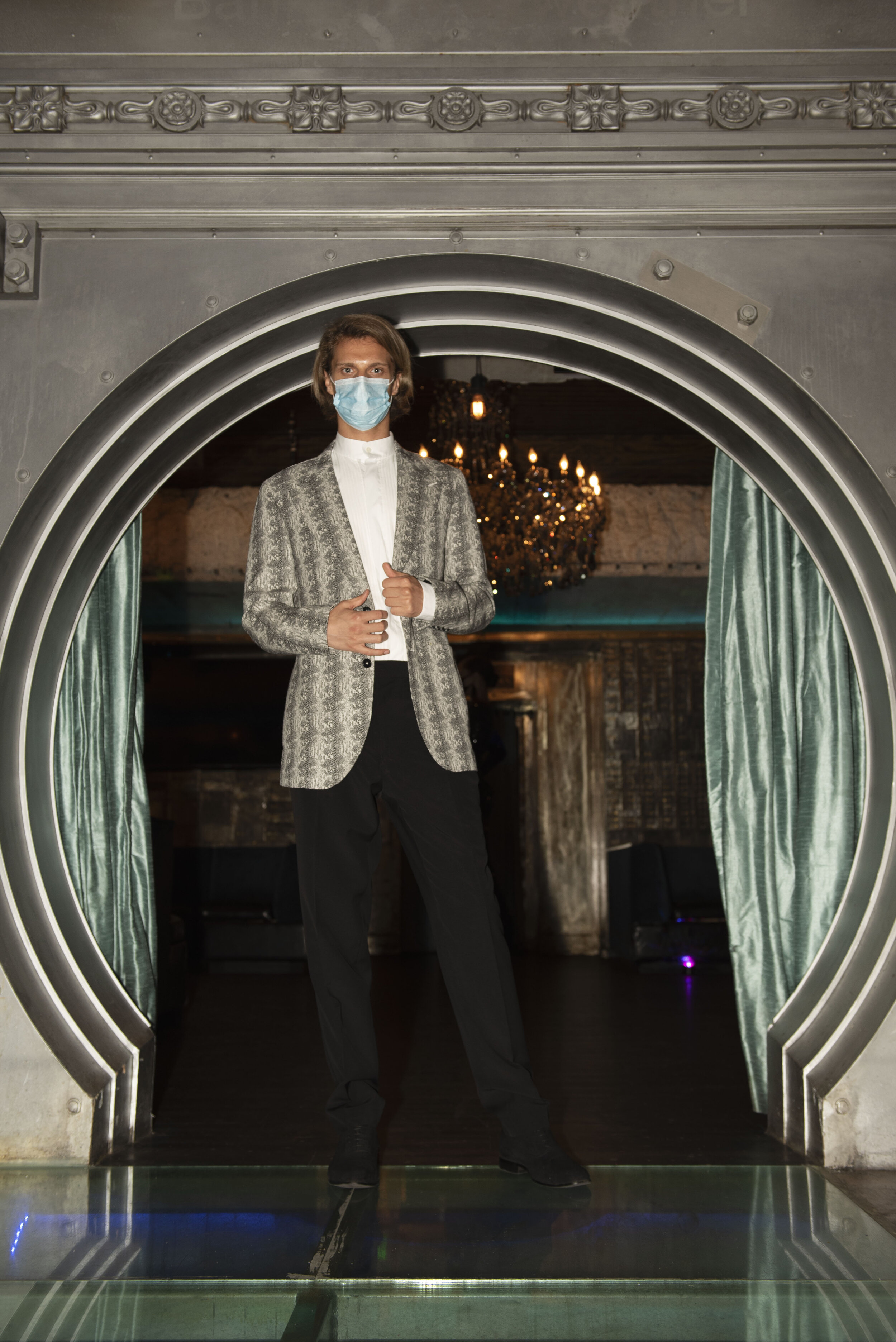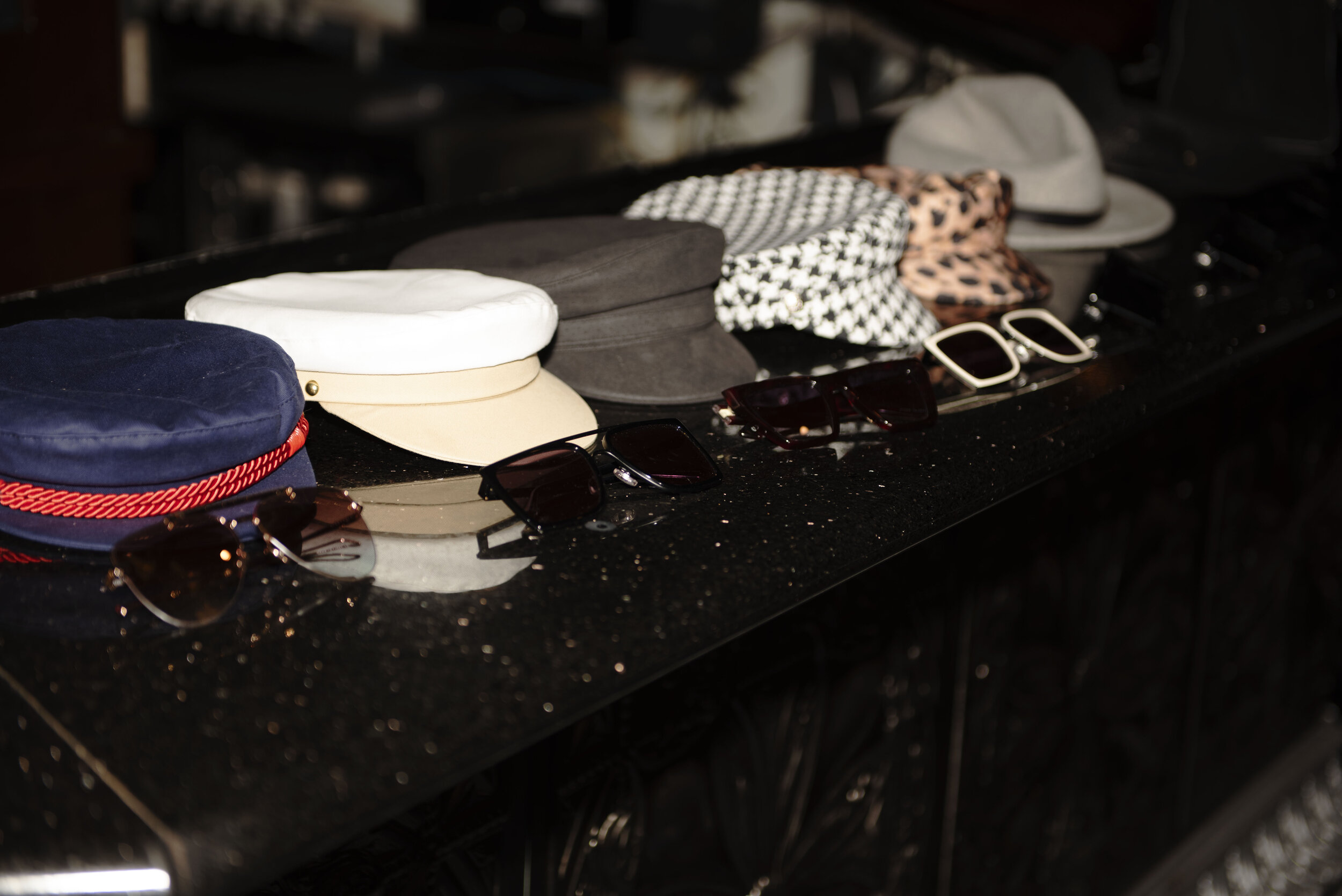The (Fashion) Show Must Go On
SF designer William Lei outmaneuvers the coronavirus, livestreams his runway show
The venue. The models. The music. A fashion show is all about setting a scene, telling a story, showcasing a collection. And so it was for San Francisco designer William Lei this past August: His Fall-Winter 2020 runway show took place in a Los Angeles bank vault turned opulent nightclub, where models strutted down the catwalk to iconic '80s tunes.
Of course, the event was perfectly anti-COVID-19-ified.
The models wore masks, the audience was virtual and the narrative reflected both quarantine reality and hope for the future. Welcome to Apocalyptic Dance.
So what made Lei, known for his impeccably tailored men's and women's wardrobe staples, stage a live fashion show while the rest of the planet was homebound?
It's quite simple, he explains: "There hadn’t been anything pleasant in our lives for so long, and I thought putting on a beautiful show was exactly what we needed. So many fashion events had been canceled all over the world, and we wanted to be the ones to present a show in the middle of a pandemic…to hopefully inspire people to step up and continue to do what they love to do."
With 2,500 people watching live (via various platforms), the audience bested Lei's expectations. His hunch that a hit of fashion would be a welcome distraction in the midst of a pandemic, and social and political unrest, was spot on.
Apocalyptic Dance was clearly a labor of love for Lei. But the show's planning also served as a personal distraction for the designer himself, who, like many, had to contend with COVID-related issues affecting his namesake label.
"My studio was shut down for over three months, and I had to relocate many things to my home—fabric swatches, paper patterns and samples—to continue building the collection. More importantly, I was about to open my first boutique in downtown SF. Since I had gotten so much traction with local customers after my November show, I was about to sign a lease for a space. COVID-19 hit and everything has been halted," he says.
We were curious about how the planning-a-live-runway-show-during-a-pandemic thing works—so we picked Lei's brain. Here's an edited version of the Q + A.
FiSF: During COVID, many designers are going the virtual photoshoot route. Why did you choose to do a more complicated live runway show?
WL: The energy that comes from a runway show is very different from a photoshoot production. The music, the staging and the walks create an unparalleled atmosphere and experience. As a designer, I always believe my job is not just to design but also to present the clothes in the right manner, so the audience gets the message.
FiSF: Tell us about the venue and how its aesthetic ties into your story.
WL: The show took place in the Reserve Night club, located in the basement of the Majestic Building in downtown LA. The venue was an actual bank vault constructed in 1924 and was later transformed into a luxurious nightclub. I fell in love with the space the moment I saw it as the vibe tied into the show and the pandemic theme perfectly. The chandeliers and that vault door are a dream for any creative production.
In terms of the story, I was imagining what it would be like if things turned absolutely apocalyptic and everyone had to live in an underground bunker—but people wouldn't give up fashion and dressing up to go dancing.
FiSF: Was it difficult to cast models for the show given the pandemic?
WL: Yes, it was very hard, indeed. Some of the models were hesitant to do a show during this time, and I completely understood and respected that. Still, I was glad to be able to pull together an amazing group of models. Many of them drove all the way from the Bay Area to Los Angeles just for the show.
FiSF: What safety precautions did you take to keep everyone safe during the show?
WL: Everybody was required to wear a mask and maintain a six-foot distance—not just during the show but also through casting and rehearsal. Before the show, we took everybody’s temperature to make sure no one had fever. I also paid extra to hire a specialized company to sanitize the venue before the show.
FiSF: What were some of the unique challenges of planning and executing a show now?
WL: It was incredibly hard to be creative during this time, and even putting together samples was challenging as our European factories were closed, or working at a very limited capacity. There was a huge delay in getting swatches, etc. from the fabric mills in Italy and the UK. Also, I had to do some of the fittings in a parking lot with the models because we weren't allowed to be in the studio as we're not an essential business. I was extremely proud of my models' and photographers' ability to stay professional during this incredibly hard time.
FiSF: Models wore many different masks during the show. Were they their own?
WL: Yes, most of them were wearing their own masks. The model with the "I Can't Breathe" mask asked me before the show whether it would be appropriate for him to wear a mask with a social message. I immediately said "yes, please." As someone who comes from a minority background, I am extremely happy to raise the concern of social justice, whatever form it's in.
FiSF: How does your choice of music, including two iconic '80s tunes, tie into your narrative?
WL: Music is always intentional and important to a fashion show. I love and admire the music and culture of the '80s, even though I was born after that. I wanted to use a song from the Pointer Sisters because Bonnie Pointer just passed away in June, and it was tragic for fans like myself. "I'm So Excited” communicates the theme of our show so well, with lyrics like: "I'm about to lose control and I think I like it." It has been a very tense and emotional many months, and I wanted the evening of the show to be a time for everyone to un-hide their excitement. It's funny, the moment we played the song people just started dancing and losing control a little bit.
I chose the final song "Total Eclipse of the Heart" [sung by Bonnie Tyler] because it's my favorite song, one about the relationship between Catherine and Heathcliff in the classic novel Wuthering Heights. Over the past six months, many people have had to separate from family and friends because of the virus. We're all heartbroken because humans are meant to be together. I wanted the closing song to remind people not to get so used to all the distancing because at some point we'll want to get back to meeting and hugging each other. (I understand it's absolutely necessary at this point.)
FiSF: Toward the end of the show, models walk down the runway without masks. What are you communicating?
WL: If you look carefully, there was a transition throughout the show. We started out with more structured military-inspired pieces to communicate that we need to stay strong and be prepared for all the negative things coming into our lives. Then towards the end of the show, we're presenting evening looks with dresses and evening jackets for the men where the models are mask-free. The message: light is always at the end of the tunnel, and the deeper we go, the closer we are to the bright exit. Very soon, we'll all be taking off our masks and dancing with our loves ones. That's why I named the show Apocalyptic Dance.
FiSF: What are you working on now and in the immediate future?
WL: In terms of events, we are already working on our next show probably around year-end or very early 2021. We're continuing to refine a message for post-pandemic days and also continue our "see-now, buy now" model. I don’t have anything to share at the moment other than to say it's going to be a fun collection that will make people smile.
Also, I just want to add that even though it's an incredibly tough time for the fashion industry and society in general, I'm very optimistic about the future. Self-adornment is a part of human nature. Wanting to communicate through fashion and style is a part of human nature. If you think about it, the world has seen some of the best fashion eras after the 1918 pandemic and the World Wars. Therefore, I am looking forward to seeing a great fashion era after the pandemic.

















